Modernization of Yugoslav VV
In the mid of thirties Yugoslav aviation operated with the modern airplane of the period but it’s time were slowly running out. All other foreigner air forces was similarly equipped with biplanes but they looking forward for their replacement in close future with all metal monoplanes with retractable undercarriage. A plan for modernization of VV KJ was made in 1935 by commander of aviation general Milan Nedic and his plane include providing of new 495 airplanes of those 114 bombers, 212 fighters and 169 reconnaissance’s. As well permitted financial support was symbolical; equipment in the 1937 remained the same as some years before. That year Yugoslav Kingdom had operational 247 Breguet XIX, 3 Dornier Do Y, 2 Avia Fokker 39, one Junkers G.24, 20 Avia BH33, 8 Hawker Fury, 143 Potez XXV. Actual number was slightly larger as well in the moment of report [ 18.08.1937] a number of planes was not serviceable and was on repairs or on overhauls and did not enter in the total number. Any way, there were 130 bombers instead of requested 258 and most of them should be replaced in service from 1939 to 1940. Fighters force should had operational 186 planes and they have 28 only, with instance that Avia fighters enter in service from 1929 up to 1932 and they have to be replaced two years later and Fury fighters should last in service up to the 1942. Most of the reconnaissance forces were consisted of 103 Breguet XIX and 143 Potez XXV. Aviation should have by peacetime formation 243 reconnaissance planes.
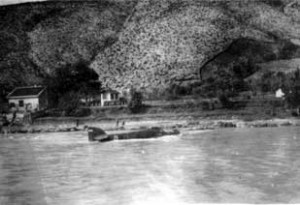 Aeronautical centre, schools and aeronautical facility escadrille had 215 trainers instead of 420. There were 127 Fizir of various types, 14 SiM PVT, 55 Hanriot trainers, 13 Gourdou Lesseire and six Dewoitine [formerly fighter’s planes]. Project was to retire all foreigner types until 1938 and domestic type until 1940, while PVT would be in service till the 1942. as well in operational and reserve aviation was 619 serviceable airplanes, instead of 1107 planes by the plane of the peacetime order.
Aeronautical centre, schools and aeronautical facility escadrille had 215 trainers instead of 420. There were 127 Fizir of various types, 14 SiM PVT, 55 Hanriot trainers, 13 Gourdou Lesseire and six Dewoitine [formerly fighter’s planes]. Project was to retire all foreigner types until 1938 and domestic type until 1940, while PVT would be in service till the 1942. as well in operational and reserve aviation was 619 serviceable airplanes, instead of 1107 planes by the plane of the peacetime order.
New project of modernization had done in 1939 [order Str.Pov.V.D.Br.389/37] by new commander of aviation, General Dusan Simovic. Plan was similar to the previous but with instance that more 42 bombers and 38 fighters were requested. That plan could cost the country 312.800.000 dinars. Again financial present ultimate problem but the first result of the proposed plans for modernization appeared. In the October 1937 begun to arrive from Germany modern twin engine medium bomber Dornier Do17K and a month later first Blenheim was delivered from the UK. The Dornier Do17 was used in combat in Spain and performance was satisfactory with defense weakness. Yugoslav version Do17K delivered from Germany had two to four machine guns and bomb load from 800 up to 1250 kg which was two to three times mote than Yugoslav massive bomber Breguet XIX and identical to the three motor bombers in service. Action radius was also larger then on the Breguet planes.
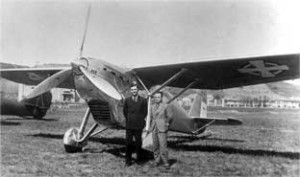 Process of modernization continued in 1940 but not in satisfactory level. Fuel accumulation was for 25 day’s of combat activities and aviation had only 25% in quantity of the proposed order. Only a credit of 200.000.000 dinars was permitted and aviation staff was looking for solution to provide more financial support in effort to organize technical minimum for peacetime formation and possible expanding in the event of war. That was 57 escadrille in the peacetime and in the war confrontation this number should be at least raised on 125 escadrille capable to oppose invader. Even this reduced number of planes requested 2.135.000.000 dinars. If there add bombs, 270 spare powerplants, 2049 machine guns and cannons [ with ammunition] this sum is as high 3.365.814.000 dinars, an amount which staff of aviation could only to dream on.
Process of modernization continued in 1940 but not in satisfactory level. Fuel accumulation was for 25 day’s of combat activities and aviation had only 25% in quantity of the proposed order. Only a credit of 200.000.000 dinars was permitted and aviation staff was looking for solution to provide more financial support in effort to organize technical minimum for peacetime formation and possible expanding in the event of war. That was 57 escadrille in the peacetime and in the war confrontation this number should be at least raised on 125 escadrille capable to oppose invader. Even this reduced number of planes requested 2.135.000.000 dinars. If there add bombs, 270 spare powerplants, 2049 machine guns and cannons [ with ammunition] this sum is as high 3.365.814.000 dinars, an amount which staff of aviation could only to dream on.
Except of financial problems, Yugoslav Kingdom had the political problems in providing of foreigner planes. Yugoslavia could not get modern version of Dornier Do17 from Germany and most of the second ordered batch was older versions. Even this delivery was extended up to the early 1939. Better situation was with Great Britain, who delivers twelve fighters hawker Hurricane in December 1938. This plane was more advanced project in compare with Fury, as well that was monoplane with retractable landing gear, with four more machine guns much higher speed, climb ceiling and combat radius.
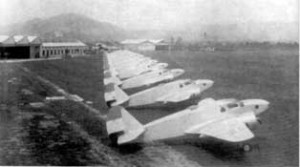 But two months before, fighter of domestic industry, Ikarus IK-2 became operational. Project of that plane was made in 1934-36 and the plane performs excellent performance. This was maybe the first plane with central armament, cannon firing thought engine shaft and in many trials outclass its main competitor, British Fury.
But two months before, fighter of domestic industry, Ikarus IK-2 became operational. Project of that plane was made in 1934-36 and the plane performs excellent performance. This was maybe the first plane with central armament, cannon firing thought engine shaft and in many trials outclass its main competitor, British Fury.
Modernization was planed to be done in three steps. In first should be provided 500 of planes. Second include providing of 250 planes and after releasing of two first steps and in regard to the political and military situation would be released more 250 of airplanes. Foreigner delivery presents one of the major problems. In the July 1939 was signing a contract of delivery of aircraft from Germany. But from the large order of fighters, bomber and trainers only 39 Bf109 were delivered until the end of the year while one hundred were ordered. In the time that was very modern and very best world fighter and was leading edge of Yugoslav defense as well that was the best plane in service and the most numbered. Only order which was released was delivery of Do17K. From UK was promised twelve Hurricanes, twenty Blenheim and one hundred of Merlin and Mercury engines but this batch was never released.
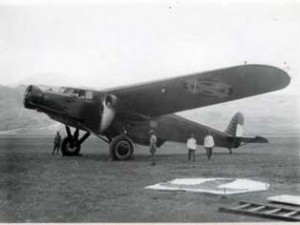 By the end of the year from Italy begun delivery of tri engine bombers Savoia Marcheti SM.79. That plane had very good capabilities and performance and its appearance gave visible strength to the bomber units of Yugoslav aviation, which was weak in a reason of British non delivery of Blenheim and hesitate of German side to deliver modern combat planes. Domestic industry tries to oppose to this problem. From March 1939 Ikarus had begun delivery of license built Blenheim bombers. Until the releasing of documentation and blueprints, factory spent ten months only to release of the first production sample. That bomber carried the same amount of bombs as the retreating Breguet XIX but was more advanced in design and performance. Aviation ordered forty planes. In a reason of the British delay in delivery of material, factory delivered 18 planes only until the end of the year. But that could be solved with other solutions as well Blenheim was capable to be powered by Italian engine, as well Polish Mercury engine and so far that K-14 Yugoslav built radials could be used. More problematical was replacement of the powerplant for the Hurricane, which presented technically more complicated problem. In this way in 1940 was tested one conversion of Hurricane with DB engine [same as on the Bf109E] and that late was known as a LTV-1. The same production of Hurricanes presented the problem and Zmaj factory had finished successfully production of Fury biplanes. No matter that Fury presented one of the top biplanes, he could not be matched with more advanced monoplanes which became prime equipment of the modern air forces. Yugoslavia had by the end of 1939 only 60 modern monoplanes so Fury was temporary important.
By the end of the year from Italy begun delivery of tri engine bombers Savoia Marcheti SM.79. That plane had very good capabilities and performance and its appearance gave visible strength to the bomber units of Yugoslav aviation, which was weak in a reason of British non delivery of Blenheim and hesitate of German side to deliver modern combat planes. Domestic industry tries to oppose to this problem. From March 1939 Ikarus had begun delivery of license built Blenheim bombers. Until the releasing of documentation and blueprints, factory spent ten months only to release of the first production sample. That bomber carried the same amount of bombs as the retreating Breguet XIX but was more advanced in design and performance. Aviation ordered forty planes. In a reason of the British delay in delivery of material, factory delivered 18 planes only until the end of the year. But that could be solved with other solutions as well Blenheim was capable to be powered by Italian engine, as well Polish Mercury engine and so far that K-14 Yugoslav built radials could be used. More problematical was replacement of the powerplant for the Hurricane, which presented technically more complicated problem. In this way in 1940 was tested one conversion of Hurricane with DB engine [same as on the Bf109E] and that late was known as a LTV-1. The same production of Hurricanes presented the problem and Zmaj factory had finished successfully production of Fury biplanes. No matter that Fury presented one of the top biplanes, he could not be matched with more advanced monoplanes which became prime equipment of the modern air forces. Yugoslavia had by the end of 1939 only 60 modern monoplanes so Fury was temporary important.
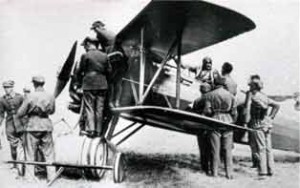 Lack of financial still presented vital problem in attempt to equip units. By the end of 1939 Yugoslav aviation had combat ready 69 bombers, 89 fighters and 230 reconnaissance’s and this number present only 44 of total requested number. But even then that was more advanced than situation a year before.
Lack of financial still presented vital problem in attempt to equip units. By the end of 1939 Yugoslav aviation had combat ready 69 bombers, 89 fighters and 230 reconnaissance’s and this number present only 44 of total requested number. But even then that was more advanced than situation a year before.
In the moment of beginning of World War 2, units of Yugoslav aviation were located on the same locations as in 1936 with couple of new units added. On Nis airfield was formed new 5. fighter regiment. Unit was equipped with Fury from 6. fighter regiment which place there was taken by Messerschmitt Bf109E. This unit provided cover for the south of country and with 3. regiment in Skoplje this unit now formed new brigade. That was 3rd mixed brigade with headquarter in Skoplje. In the mid of 1939 military aviation had three brigades, four bomber regiment, three fighter regiment, one reconnaissance regiment and five independent group’s. In the 1939 two fighter groups were temporary equipped with reconnaissance planes which should be operated until the deployment of destroyers from import. During the reequipping of Yugoslav aviation in period of 1939-40 plans was made for providing of 39 twin engine fighters Potez 63 for 51st and 52nd group, but as well that plan was not released in a reason of the world war, that group was temporary equipped with single engined fighters. In autumn 1939 after successful testing staff of aviation decide to equip these groups with domestic built heavy fighters. Fifty first group should receive Rogozarski built R-313 [SiM- XV] and 52nd group should receive Ikarus built Orkan. This plan was not released until the April war ’41. More over, those units even could not be equipped with satisfactory number of IK-3, Hurricane and Bf109E so 51st and 52nd group does not had formation number of planes. Similar situation was with 33rd and 34th groups which does not had enough number of Hurricanes so one escadrille was still operating IK-2 fighters while the rest of the escadrille had six airplanes each.
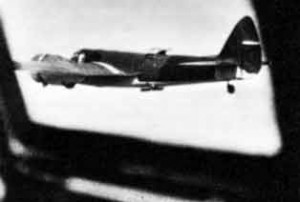 In the new 1940 aviation went with a total of 381 planes of all types. By the order of battle there should be 870 planes, of those 172 in aviation reserve store. Staff of aviation well known that they could hardly got finances for 489 airplanes and reduced request on 622 of airplanes only. In the spring of 1940, after study of the war in Europe, aviation staff again enlarged its request for in quantity of airplanes and in future units organization were planed to each group should be consisted of three escadrille, and regiment consisted of three groups.
In the new 1940 aviation went with a total of 381 planes of all types. By the order of battle there should be 870 planes, of those 172 in aviation reserve store. Staff of aviation well known that they could hardly got finances for 489 airplanes and reduced request on 622 of airplanes only. In the spring of 1940, after study of the war in Europe, aviation staff again enlarged its request for in quantity of airplanes and in future units organization were planed to each group should be consisted of three escadrille, and regiment consisted of three groups.
New and final order was from the April 15 1940 and that was order Str.Pov.V.Dj.Br.2924 which request order of battle which got to have 36 escadrille of fighters, of these nine heavy fighters, with total of 558 of fighter planes, bomber units have to had 45 escadrille with 563 of bomber planes and reconnaissance units should had 24 escadrille of those three for strategic tasks, 14 for tactical reconnaissance and seven for combat reconnaissance and operate with total of 269 airplanes.
Advance in development was symbolical. Only two new escadrille were formed within 6th fighter regiment and 3rd bomber regiment was only unit to be close to the proposed organization as well it had three escadrille within each of groups. In the inventory of 6th regiment was mainly German bf109E. New formed escadrille within 31st group and 32nd group got Bf109 fighters from 51st group while this group received domestic built IK-3 fighter. That was fighter of domestic construction, which project was done in 1936 and first flights were made in 1938. In a reason of air accident and strike of workers, production was much delayed and first block of 12 airplanes was delivered late in 1940. No matter that this plane was some 50 km slower than Bf109E, it was very agile and could take heavy combat punishment.
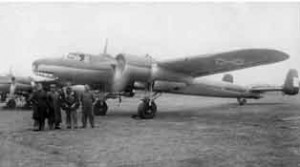 Yugoslavia also had 24 Hurricanes of British production as well from UK was delivered block of 12 planes in the beginning of 1940. They were employed in 4th regiment. Hurricanes was later delivered from Zmaj factory and deployed into 52nd group. Except of Hurricanes from the UK was deliver 20 Blenheim bombers which was deliver to the 1st and 8th bomber regiment which already operated Ikarus built Blenheims. Up to the spring 1940 from Italy was released order of 45 bombers SM.79 which equip 7th bomber regiment and 81st independent group. Up to the summer 3rd bomber regiment received 26 bombers Do17Kb from the factory in Kraljevo.
Yugoslavia also had 24 Hurricanes of British production as well from UK was delivered block of 12 planes in the beginning of 1940. They were employed in 4th regiment. Hurricanes was later delivered from Zmaj factory and deployed into 52nd group. Except of Hurricanes from the UK was deliver 20 Blenheim bombers which was deliver to the 1st and 8th bomber regiment which already operated Ikarus built Blenheims. Up to the spring 1940 from Italy was released order of 45 bombers SM.79 which equip 7th bomber regiment and 81st independent group. Up to the summer 3rd bomber regiment received 26 bombers Do17Kb from the factory in Kraljevo.
From the equipment of 2nd regiment and 21st group were formed Army aviation with strength of seven groups with total of 14 escadrille and there were also one naval reconnaissance group. In the event of war these groups should operated in favor of infantry troops, artillery guidance, tracking of enemy movements, portions and secondary ground attack. Fury fighters fill the 21st group of 5th regiment.
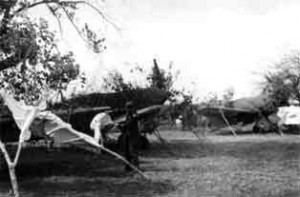 In that period Breguet XIX and Potez XXV was in total disadvantage and they are removing from the reconnaissance units. As well command did not had success in obtaining of replacement Yugoslav aviation was almost without of reconnaissance units with instance of one group with 12 Blenheim.
In that period Breguet XIX and Potez XXV was in total disadvantage and they are removing from the reconnaissance units. As well command did not had success in obtaining of replacement Yugoslav aviation was almost without of reconnaissance units with instance of one group with 12 Blenheim.
As previously mentioned in the plans from 1938 was project for 140 planes in reconnaissance units. There were plans to equip 11 groups with two escadrille with nine airplanes each plus two more with total of 20 Blenheim. For 2nd regiment was planed to have 84 Henchel 126. Regiment should have three groups with two escadrille in each group. Each escadrille should have 12 airplanes and four more for staff. Also there were request for 36 airplanes Fiesler Storch for 21st observer group. Unit should have 12 planes in escadrille and three groups and one additional staff airplane.
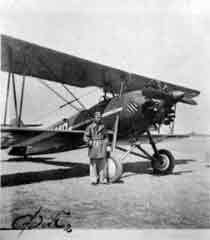 In this way some orders were placed and credits were obtained but beginning of Second World War stops the releasing of the project. Germany does not release any Henchel 126 and only deliver early version of Storch without defensive armament. In that way they was not suitable to operate on the combat zone so they were precede to the liaison escadrille. Only were released twelve Blenheim planes.
In this way some orders were placed and credits were obtained but beginning of Second World War stops the releasing of the project. Germany does not release any Henchel 126 and only deliver early version of Storch without defensive armament. In that way they was not suitable to operate on the combat zone so they were precede to the liaison escadrille. Only were released twelve Blenheim planes.
By the project of development from 1939, for the equipping of the reconnaissance units should be released more lanes. For 11th independent reconnaissance group was need for a 25 Blenheim, where the each of two escadrille should have nine planes, one in the unit staff and six in reserve depot. Also there was plans for a 175 Henchel 126 for equipping seven groups for Army close reconnaissance with strength of fourteen escadrille with nine plane in each, seven airplane sin group staff’s and 42 airplanes in air reserve. Army aviation also should operate 84 Storch in seven observer’s escadrille each with nine airplanes and 21 in the reserve.
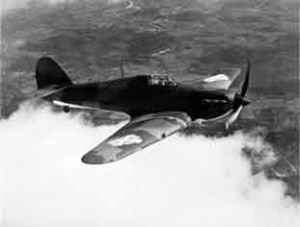 Staff of aviation took emergency action to release from Germany 175 Henchel recce airplanes and 100 Storch observers and from domestic industry twenty two engined Blenheims. However, that order was not released as well Germany broke any delivery and domestic industry was late in delivery of license built Blenheims.
Staff of aviation took emergency action to release from Germany 175 Henchel recce airplanes and 100 Storch observers and from domestic industry twenty two engined Blenheims. However, that order was not released as well Germany broke any delivery and domestic industry was late in delivery of license built Blenheims.
With project of reequipping of reconnaissance aviation which was done in autumn 1940, all reconnaissance airplanes for the Yugoslav aviation should be obtained from the domestic industry. In this way 11th group should got twin motor airplanes Zmaj R-1 with Hispano Suiza 14AB radials, three seater of mixed construction. Army aviation with seven peacetime or fourteen war order escadrille for close reconnaissance should operate domestic NIRO with K-7 radial engine which had to be produced in Albatros factory in Sremska Mitrovica after trials. As well production did not begun until the war; unit still remained with obsolete type’s Breguet XIX and Potez XXV.
Srecko Bradic
Photos- Perme family, MJV, Michel Ledet, Kenneth Heck, Marcel Kares, Murko family, Srecko Bradic, Dornier, Malcolm Pasingham
References:
Research of Andrija Pavlovic
Research of Miroslav Filipovic
Research of Srecko Bradic
various pre war and post war publication






Hi Srecko,
Super job with content and presentation on your website.
Enjoyed the photo of Avia Fokker trimotor bomber.
Regards,
John D. Bybee
Vermont, IL USA